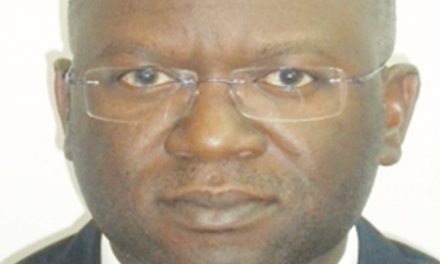
Embracing nuclear power as a strategic step for Namibia’s energy independence

Every country requires a reliable energy system for economic growth. Households, industries, and businesses depend on a consistent energy supply for efficient operations.
Consequently, job creation also depends on the energy system. Energy-intensive industries, such as manufacturing, require a consistent energy supply to maintain and expand their operations. When these industries thrive, they create jobs and stimulate economic activity. And the further you develop your economy, the more energy you need.
Reliable energy is a fundamental component of modern living. It powers homes, hospitals, schools, and other critical infrastructure. Access to electricity and other forms of energy improves living standards, enables access to technology, and enhances the overall quality of life. Healthcare, education, national security, disaster resilience – all and everything depends on energy.
The Namibian energy system is import-based. The country imports approximately 60-70% of its electricity from South Africa, making it heavily reliant on its neighbor for power supply. The electricity imports primarily come from the Eskom, the South African electricity utility.
There are no inherent flaws in importing energy. However, one should have a very reliable trade partner. South African energy system is not enough for domestic consumption due to infrastructural issues and a lack of sufficient investment in new power generation capacity to meet growing demand. Eskom, the state-owned electricity utility, that sells electricity to Namibia, has faced financial difficulties, including high levels of debt. These financial challenges have hindered its ability to invest in infrastructure and maintain reliable power generation.
In the long run, Namibia cannot remain dependent on South African electricity exports. The country needs its energy generation. How does one generate energy? The first choice is burning fossil fuels like natural gas, coal, or oil. However, this choice comes with a price, literally. If a country does not have abundant natural resources like Namibia, then it has to buy it in the international markets. The price of said resources is determined based on supply and demand and therefore fluctuates significantly. If a country cannot predict the price of imported energy resources, then it cannot efficiently plan its economic development.
Another issue is environmental: apart from energy burning fossil fuels also generates greenhouse gases. These gases are the main reason behind climate change.
The other electricity-producing option is low-carbon energy sources like hydro, solar, wind, and nuclear. Namibia has some hydropower capacity, with the Ruacana and Epupa Falls hydropower plants being the most significant.
However, as global warming progresses, the climate becomes less predictable with less precipitation. Since hydropower plants utilize the flow of rivers to generate electricity, over time they will generate less and less. As the name suggests, wind and solar power plants only work when there is wind and sun.
Nuclear power has the best of both worlds. It provides a stable and consistent source of baseload power, which means it can operate continuously and meet the constant electricity demand. This reliability is crucial for maintaining a stable grid and ensuring a consistent power supply to industries and households. Nuclear power plants produce electricity with minimal greenhouse gas emissions. Unlike fossil fuels, nuclear reactors do not emit greenhouse gases during electricity generation.
Nuclear fuel contains a high energy density, which means that a small amount of nuclear fuel can produce a large amount of electricity over an extended period. The cost of nuclear fuel, which is made from uranium, should not be of any concern since Namibia is the fourth largest uranium producer in the world.
Nuclear power comes in all shapes and forms. There are large nuclear power plants of over 1000 Megawatt electric (MWe) (enough to light 100 million LED bulbs) and small ones (small modular reactors – SMRs) with reactors of some 50 MWe. The main advantages of SMRs are their comparatively low cost, short construction windows, the possibility for serial production, as well as their modularity – the ability to add reactors to the plant as demand for electricity increases.
The SMR market is expected to be worth about 400 billion euros by 2035-2040 with a volume of almost 100 GW. Many countries are developing their own SMR projects but the majority are at the design stage. The only tried and tested SMR design is Russian – it is the same technology used on nuclear icebreakers. They are available as both onshore and floating models.
For a developing nation like Namibia, opting for a small nuclear power plant could be a good starting point allowing one to get acquainted with the technology without breaking the bank. Namibia can start with a smaller capacity and gradually expand its nuclear program as energy demand grows. This reduces the need for a large upfront investment.
SMRs can be deployed in various locations, including remote or off-grid areas. This flexibility allows Namibia to provide electricity to regions that may not be easily accessible by other means. Plus, SMRs can provide a source of energy for desalination, addressing water scarcity issues in arid regions like Namibia. This dual-use capability can be especially valuable.
Namibia urgently needs to diversify its sources of electricity generation, enhancing energy security and resilience, and nuclear is the best option available.











































